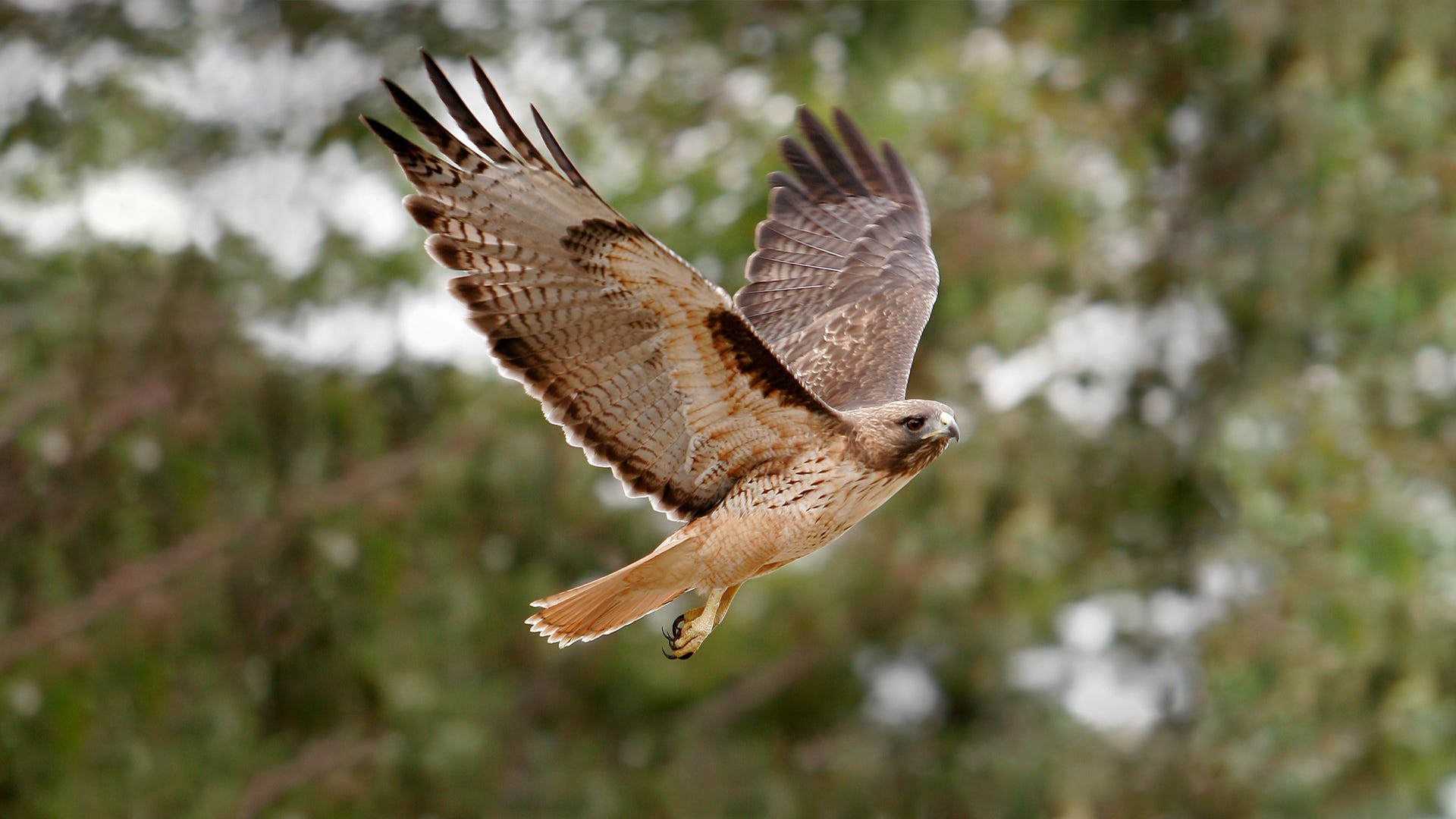Backyard birdwatchers put their heart and soul into making their backyards a haven for the birds that visit them throughout the year. Unfortunately, that same welcome mat rolled out for various bird species often attracts birds of prey looking for their next meal.
It’s not uncommon for birds of prey, especially hawks, to visit feeders during migration, winter, and the breeding season. These appearances pose a life-threatening risk to birds who come to eat at those feeders. For birdwatchers, it is unsettling to think that their efforts to feed their feathered visitors might end in a casualty. Birds of prey hunting other birds is a natural activity and plays a vital part in the ecosystem. But, there are some steps birdwatchers can take to help protect birds at their feeders and minimize the appearance of birds of prey.

Offer Refuge
Just as when you were planning out your landscape in the hope of attracting birds to your backyard, offering refuge for those same birds from predators is important. Natural cover is ideal for protecting birds from attacks by hawks and other predators. Think brush piles, dense trees, and shrubbery within 8 feet of your bird feeder. The idea is that a bird will be able to hide when feeling threatened.
Research plants native to your area and consider plants that will also provide fruits or seeds for a source of nutrition. This will help birds continue to eat while staying safe from a predator.
See also: Where to Hang Seed Feeders for Birds
Skip Putting Seeds on the Ground
It only makes sense that birds who feed on the ground, such as doves, will be more vulnerable to an attack while feeding. Because they may be too engrossed in feeding, they are often unable to react in time and fall victim to hawks scanning from above. Also, because they are eating on the ground in the open, they are limited to where they can flee for safety.
Protect ground feeding birds by avoiding scattering seeds on the ground and raise low feeders to your eye level. While there may still be an attempt to prey on ground feeders, this will help reduce the hawk’s success rate.
See also: 4 Reasons to Have a Seed Tray Under Your Bird Feeder
Safeguard Bird Feeders
Consider safeguarding your bird feeders by shielding them from an attack using strategic placement. Think of the places you might hang a feeder to keep it dry from the rain and consider moving your feeders to those areas. Look for overhangs, awnings, canopies, gazebos and similar spots that offer shelter from the elements to protect feeding birds.
If you don’t have any of these resources in your backyard, consider a covered platform feeder. Because birds of prey are often circling in the air scoping out feeders, a covered platform feeder may deter their visual ability to spot your feeder.
See also: How to Stop Bully Birds from Raiding Your FeedersRemove Feeders Temporarily

The fastest way to mess up any habitat is to contaminate it with chemicals. While the effects of toxic pollutants such as oil spills are very obvious, less well known is the idea that all the chemicals we use on a daily basis have the potential to negatively impact habitats. Perfumes, dyes, soaps, cosmetics, and other chemicals all run into our water supplies. This can build up in rivers, lakes, wetlands, marshes, and oceans. Does your car have a slow leak? Antifreeze, motor oil, brake fluid, and other chemicals can wash off roadways and directly into habitats. Even after treatments to clean water, the chemical impact can remain in our environment. Reducing all the chemicals we use is a good step toward protecting bird and wildlife habitats.If you exhaust these measures, you may have no option than to remove your backyard bird feeders and birdhouses altogether. However, if a family has already moved into one of your birdhouses, experts advise against touching it at all. Fortunately, this doesn’t have to be a permanent solution. Once the bird of prey realizes your yard is no longer a source of food, they will move on to other areas to hunt.
Don’t worry about losing your backyard visitors. Once you deem it safe to put your feeders and bird houses back out, the birds will return rather quickly. There is always a chance that the hawk will return, but it generally that takes some time. There’s always the chance they have found a more plentiful resource elsewhere.
For the backyard birdwatcher, it’s upsetting to find a tell-tale pile of feathers—evidence of a bird of prey’s success—at their feeders. There will always be the chance of birds coming under attack as they visit backyard feeders. Like migration, molting, and breeding, it’s another occurrence in the world of birds that birdwatchers will be witness to. It’s neither bad nor wrong.








